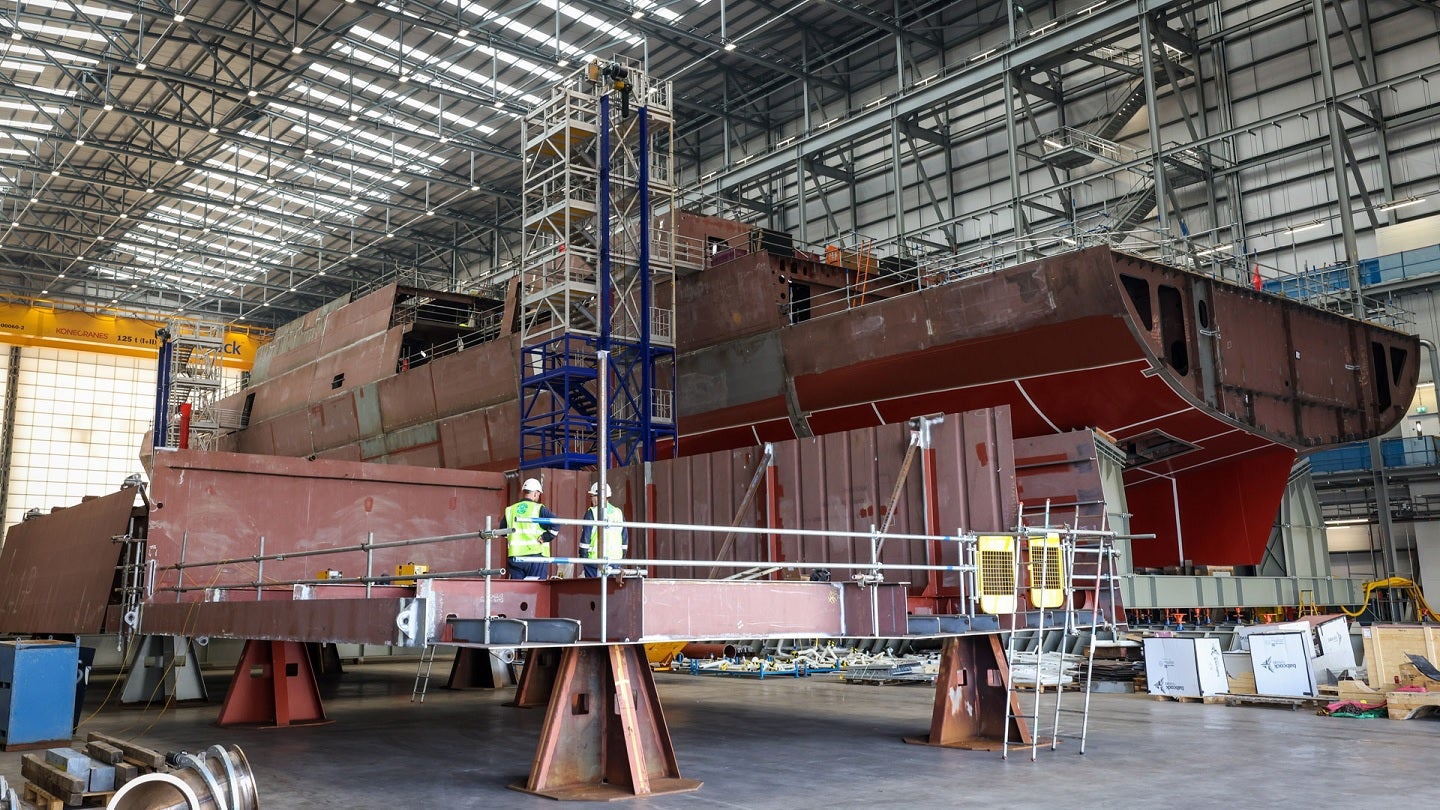
The first crewmembers of the future UK Type 31 frigate HMS Venturer have officially joined the vessel, with nine personnel formally assigned to a ship’s company that will grow to more than 100 once in service and operational.
In a 12 July release from the UK Royal Navy, the nine crewmembers will help to write the ‘operators manual’ for HMS Venturer and the other four ships of the Inspiration-class frigates being designed and built at UK defence prime Babcock’s site in Rosyth, Scotland.
According to the Royal Navy, all block units of HMS Venturer are now in production, with the vessel due to emerge from the construction hall at Babcock’s Rosyth facility “within a year”.
Once accepted from Babcock, all five ships will undergo a period of capability upgrades under the UK Ministry of Defence and demonstration trials before entering service with the Royal Navy.
Originally designed as a light patrol frigate, the 5,700-tonne Type 31 was envisaged to feature minimal surface-to-surface attack options, primarily based around the single Mk110 57mm main gun from BAE Systems and two Mk4 40mm secondary weapon systems from Saab Bofors. Anti-air capability was to be provided by the SeaCeptor ‘mushroom farm’, amidships.
The Inspiration class will also host an embarked Lynx Wildcat helicopter, able to perform anti-surface and anti-submarine roles, as well as maritime surveillance.
However, the recent announcement that the UK was exploring, with US assistance, the potential to install the Lockheed Martin Mk41 vertical launch system (VLS) into the Type 31 frigates could see the class develop into more rounded multi-purpose frigates, capable of carrying a wider range of kinetic attack capabilities.
It is not known how such design changes would be accommodated and what systems would be deleted from the class. For example, the integration of the Mk41 VLS could see the removal of the SeaCeptor anti-air capability and any canister-based anti-surface missile fitted, such as the Naval Strike Missile.
It is also unclear whether any design changes would impact the whole of the five-ship Inspiration class, with Venturer’s build so far advanced. This could result in the creation of a sub-variant in the class, with a Batch 1 being fitted as planned with the Sea Ceptor system, with the Batch 2 featuring the Mk41 VLS, potentially in a 2/3 or 3/2 split across the five vessels.
HMS Venturer needed in service sooner rather than later
The UK Royal Navy’s battle to maintain a viable fleet of surface warships able to undertake necessary taskings sustained a further hit earlier this year as the Type 23 frigate HMS Montrose was decommissioned after 30 years of service.
The step marks the second Type 23 decommissioned ahead of schedule, following the retirement of HMS Monmouth in 2021, which was planned to be retained in service until the 2026 timeframe. HMS Montrose was listed in official figures as having a planned out-of-service date of 2027, meaning that it has had to come off the line four years ahead of schedule.
A magnifying factor of the retirement of the increasingly ageing Type 23 frigates is that the timeline for the replacement Type 31 frigates will see the first-in-class HMS Venturer enter service in 2027, by which time the fleet could be further reduced with the retirement of Type 23 frigates HMS Lancaster and Iron Duke in 2024 and 2025 respectively.
Should these timelines remain, the UK Royal Navy’s surface fleet of major surface combatants, made up of the Type 23 frigates and Type 45 air defence destroyers, could be down to just 15 vessels. The current structure of the Royal Navy’s missions dictates a 19-strong surface warship requirement among the Type 23 and Type 45 classes.
The Type 31s are one of two classes of frigate under construction for the Royal Navy, with Babcock’s fellow UK defence prime BAE Systems manufacturing the Type 26 anti-submarine warfare frigates at its sites on the River Clyde in Scotland.








